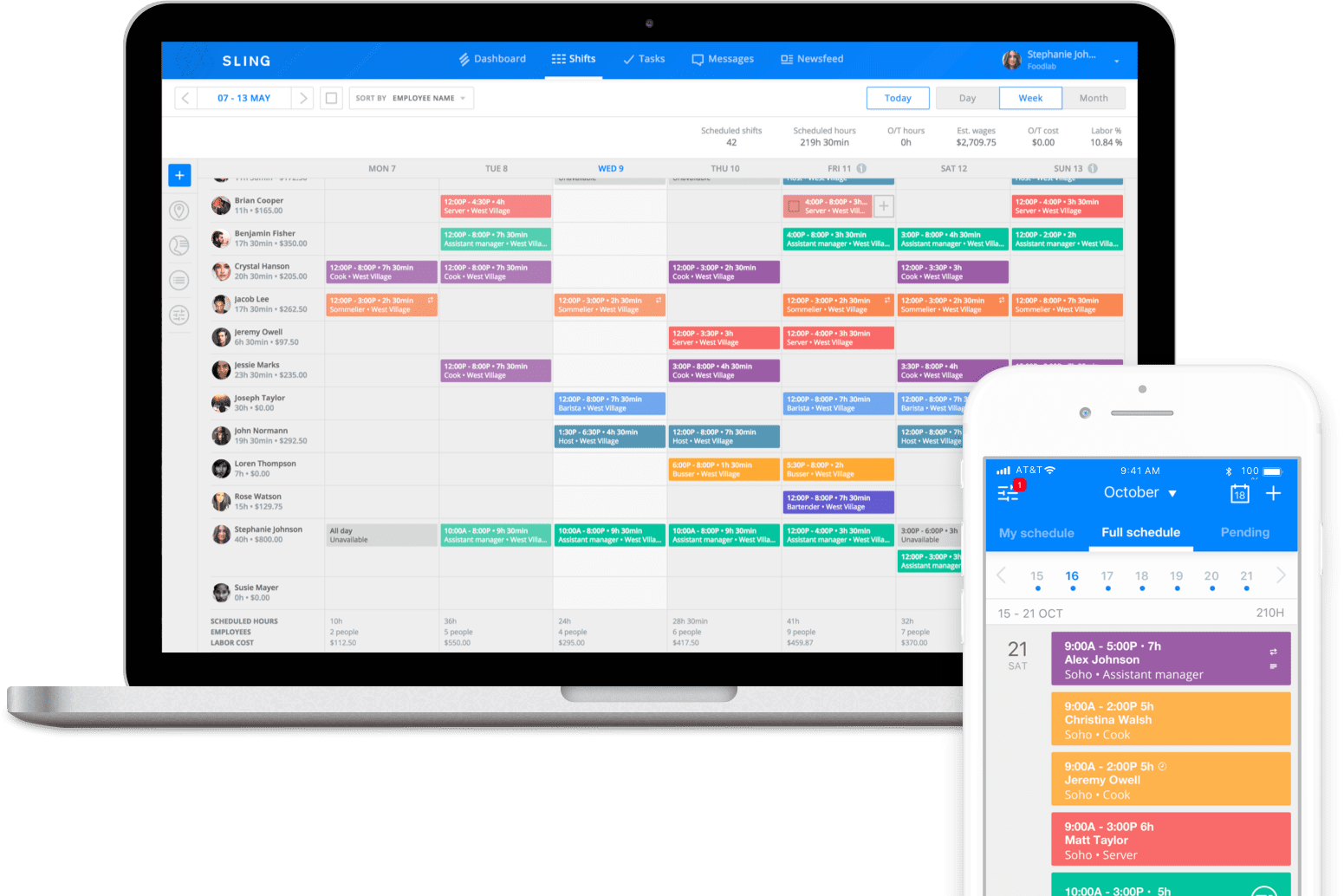The 20 Best Ways To Improve Motivation In The Workplace
Motivation is defined as the general desire or willingness of someone to do some...

Many business owners and managers attribute employee burnout to high levels of ongoing stress. And while the two are intimately related, stress and burnout are very different things.
In this article, the experts at Sling will help you recognize the signs of employee burnout and give you tips for preventing the mental, physical, and emotional symptoms that it can cause.

Employee burnout — or just burnout for short — is mental, physical, and emotional exhaustion that leads to a lack of enthusiasm, decreased motivation, and a general sense of displeasure with the job.
Stress is the leading cause of employee burnout, but it’s more than just the “regular” I-need-this-on-my-desk-by-five tension that is characteristic of business in the 21st century.
Instead, it’s the ongoing, chronic stress that continues day after day and week after week that chips away at your employees’ engagement and results in exhaustion, general malaise, and other distinct symptoms.
But if stress causes burnout, how can you distinguish between the two, and how can you identify an employee suffering from the latter? We’ll discuss that in the next section.

As we touched on above, the main distinction to understand is between stress and burnout.
A small amount of stress over a short period of time is normal. A large amount of stress over a long period of time is not and leads to employee burnout.
To help you see the difference between the two mental, physical, and emotional states, here are the primary symptoms of stress:
How does employee burnout compare? Use the symptoms below as a guide for recognizing this debilitating condition.
While stress causes hyper-engagement, too much stress for too long leads to a very real and palpable sense of disengagement from team members and the work itself.
As a result of too much stress, over time, a burned-out employee starts to experience blunted emotions. They don’t show excitement. They don’t show anger.
They seem to be beyond caring about anything.
Regular, everyday stress tends to produce a feeling of urgency and empowerment. Prolonged stress — and employee burnout — on the other hand, produces feelings of helplessness in the face of a challenge.
Employees can become unsure of what to do first or next as the case may be, or they might feel that the task, challenge, or deadline is completely beyond their power to achieve.
Decreased motivation — even hopelessness in many instances — is a distinguishing symptom of employee burnout.
This lack of motivation often manifests as forgetfulness, the inability to concentrate, a lack of energy, and even physical symptoms such as headaches and muscle soreness.
Now that you know how to identify employee burnout, we’ll discuss some ways to prevent it from occurring in the first place.

While collaboration, teamwork, and communication are vital for your business’s success, too much of each can lead to overload and burnout.
Examine your business structure with an eye toward identifying the number of meetings, conference calls, webinars, and other interruptions during any given workday.
Is this amount of collaboration necessary, or could your team function efficiently with less?
Eliminating excessive collaboration gives your employees more time to focus on their work, helps them stay engaged in the task at hand, and reduces the stress that leads to burnout.
The “always-on” nature of our digital workplace leads to the mistaken assumption that employees can use these tools to multitask effectively and get more done.
While it may seem like a good solution on the surface, underneath the shiny exterior, multitasking is an exhausting activity. It is often counterproductive and can contribute to the stress that leads to burnout.
To help prevent employee burnout, discourage multitasking and promote focusing on a single objective whenever possible. Granted, there are times when multitasking is necessary to get a specific job done, but it shouldn’t become a regular practice in your business.
Autonomy in the workplace means giving your employees the permission, space, and flexibility to control how they approach and complete their work.
Independence within the workplace can help reduce the feelings of stress that can build up over time and lead to employee burnout.
It’s critical to build the right amount of autonomy into each task because too much can create excessive ambiguity, which often leads to more-than-usual stress and, eventually, burnout within the workplace.
Discuss the preferred degree of independence with each employee, and experiment with what works and what doesn’t to find the right balance.
There is a very real tendency in business to assign the most work to the most capable employees — even to the point of overload.
This practice inevitably leads to an inordinate amount of stress on a few team members and, if allowed to continue long enough, employee burnout.
Spread the workload throughout your whole team so as not to overburden a small number of individuals.
One of the best ways to avoid employee burnout is to improve work performance with effective scheduling. And the best way to schedule your team quickly and efficiently is with the Sling suite of tools.

Sling makes it possible to schedule even the most complicated shifts, like:
With advanced features like the built-in time clock, labor cost optimization tools, reports, newsfeed, messaging, and task list, you have everything you need to make your job — and your employees’ jobs — easier and more enjoyable.

And when your team is happy, the potential for employee burnout decreases significantly.
For more free resources to help you manage your business better, organize and schedule your team, and track and calculate labor costs, visit GetSling.com today.
See Here For Last Updated Dates: Link
This content is for informational purposes and is not intended as legal, tax, HR, or any other professional advice. Please contact an attorney or other professional for specific advice.
Schedule faster, communicate better, get things done.